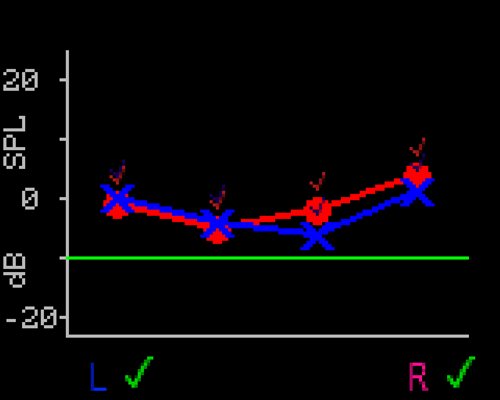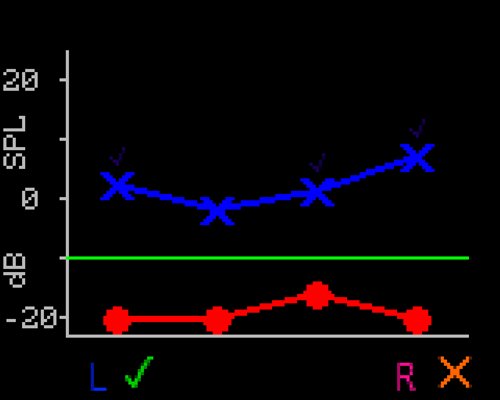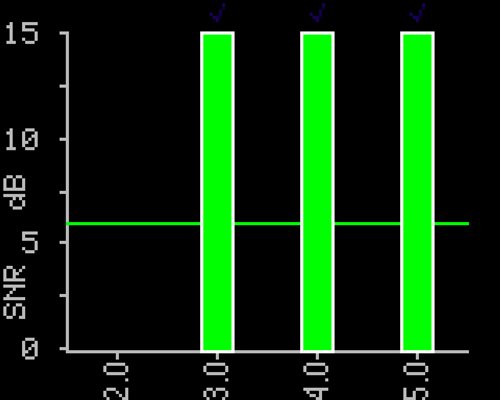GSI Corti Latest
In spring of 2021, GSI released a new version of the Corti, GSI’s handheld screening and diagnostic DPOAE and TEOAE testing device. Several new features were introduced, expanding on the functionality, and building on the core features that have already made it an industry standard for OAE testing and screening. Let’s look at some of the key updates.
Reviewing Results and Expanded Memory
For those of you familiar with the Corti, you will know that prior to the 114.01 update it was only possible to review the last result obtained by the device. We have now added the ability to review both tests stored in memory while you are testing in the R/L mode. In this testing mode, the device only saves one right result and one left result. There are many applications where this mode makes sense. For example, a screening version in a pediatrician’s office where the results are printed immediately after testing, or at an ENT office where results are transferred or printed between every patient. Being able to review the results for both ears after testing will be a convenient feature for clinicians who want to make sure they are satisfied with what they have prior to printing or transferring.
While the R/L mode is a good choice to fit in with some testing protocols, in some cases it makes more sense to have a number of results stored on the device prior to printing or transferring. Previous versions of Corti allowed or up to 250 results to be stored in the internal memory, and now with the 114.01 update, the Corti is able to save up to 500 results in the Save 500 mode. This mode is ideal for applications including newborn hearing screening programs, community outreach applications, and with any patient you want to replicate results to demonstrate reliability.
One last quick note here on reviewing results. We have also added check marks that will appear on the results screen over every frequency that meets the criteria defined for a pass. These check marks will be available for both the Bar Chart and Value Graph view options. We also added a check mark to indicate an overall pass for each individual ear that will be displayed next to the R and the L in the corners below the results. A refer will be indicated by an X.


Saving time and Reversing the Order
Corti V114.01 includes an Auto Stop Pass option. With this feature, testing will stop once the passing criteria for the testing protocol has been met. For example, if you are running a four frequency DP 4s screening protocol and to achieve an overall pass you need responses at 3 out of 4 frequencies, As soon as the first three pass, the Corti stops the test and displays a Pass. This saves you the time of not having to test the last frequency in the sequence. While it may only save up to 8 seconds per patient in this scenario, anyone who has spent time testing newborns and infants knows that a couple of seconds can make the difference between getting a result and not getting a result if the patient gets fussy.
Many of the updates and enhancements we bring to GSI products come directly from requests from current users in the field. Reversing the order of frequencies tested from high to low was something we heard from many current Corti users, and we are thrilled to include it with this update. This change is a global setting that will affect all of the DP protocols that the device is equipped with, both screening and diagnostic.

New Options For Minimum Amplitude
One of the more flexible features of the Corti unit is the Minimum Amplitude setting. When turned on, this feature requires a minimum response amplitude of the DP or TE emission, in addition to the other screening criteria, to reach a PASS result. In version 114.01, we have added the ability to enable the Minimum Amplitude for both DP and TE to any level between +5 and -10 in 1 dB increments.
There are several reasons why including a minimum amplitude makes sense. One advantage of using the Corti with the Minimum Amplitude turned on is that it is more likely to identify mild hearing losses. Enabling and setting the minimum amplitude should be decided up on based on the goals and the population being tested. For example, with the testing of pre-school children where the goal is to identify hearing losses that might affect educational progress, it may be advantageous to turn the Minimum Amplitude on. For newborn infant hearing screening, where OAE responses are generally quite large, the Minimum Amplitude may be turned off.
Follow the link for more information on the Corti.